Have you ever noticed the distinctive puckered texture and striped seersucker pattern on summer suits or lightweight shirts? The history of seersucker fabric reveals that there's more to this fabric than meets the eye.
Its journey from the bustling markets of colonial India to modern fashion runways spans centuries of innovation and cultural exchange. The transformation of this humble cotton textile into a global fashion statement reflects larger patterns of trade and colonialism. It also highlights evolving style preferences that have shaped our modern wardrobe.
Key Takeaways
- Seersucker originated in British colonial India. The name, derived from Persian words meaning "milk and sugar," reflects its distinctive texture.
- Joseph Haspel Sr. introduced seersucker to America in 1909. This transformed it from colonial wear to a Southern fashion staple.
- Specialized slack-tension weaving creates the fabric's unique puckered texture. This gives it its signature cooling properties.
- Seersucker evolved from workwear to high fashion. It became popular among Wall Street professionals and Ivy League students.
- Modern seersucker has a global influence. It appears in international fashion collections and is expanding beyond traditional suit designs.
The History of Seersucker Fabric: Origins in Colonial India
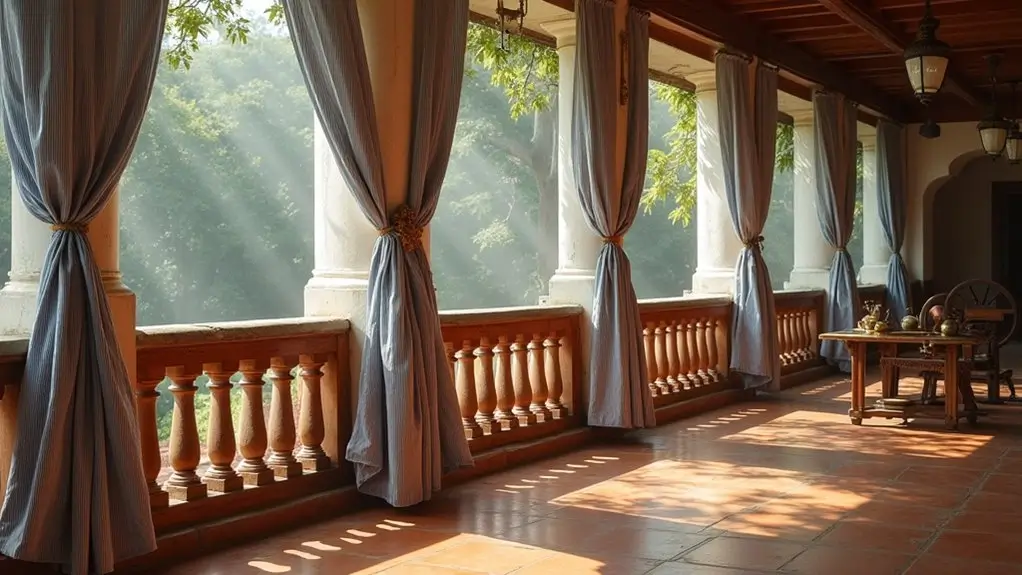
Seersucker's journey began in India during the British colonial period. The fabric's name originated from the Persian words "shir o shekar." It means "milk and sugar," a reference to its smooth and puckered texture.
During colonial rule, cotton gained popularity for its remarkable cooling properties in India's sweltering climate. The traditional blue and white seersucker became popular among British colonists. They needed lightweight clothing that could withstand the heat.
The fabric's distinctive puckered appearance, created through a unique weaving process. This made it stand out from other cotton textiles. It also helped establish its reputation as a practical warm-weather choice.
The Rise of American Seersucker
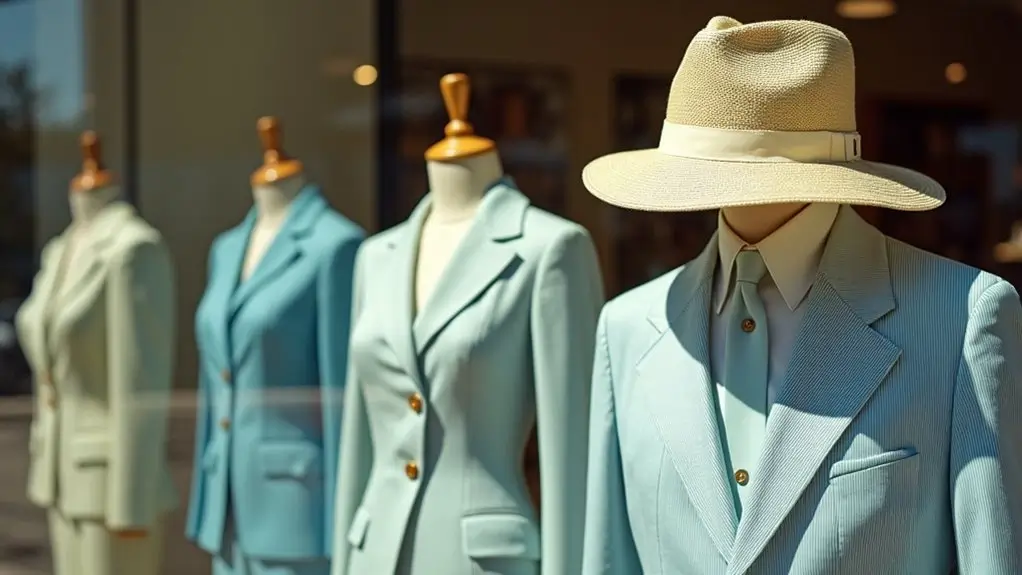
The fabric's American journey began in New Orleans around 1909. Joseph Haspel Sr. started manufacturing seersucker suits for laborers and businessmen.
You'll find the history of seersucker in America marked by three key developments:
- Its adoption as a traditional suit material for Southern gentlemen;
- The fabric's rise to prominence during WWII as military uniforms;
- Its emergence as a quintessentially American fabric in modern fashion.
Today's summer fabric maintains its lightweight nature while adapting to contemporary styles.
You'll see modern seersucker in everything from seersucker suits to casual wear. This proves its enduring appeal in American fashion.
Manufacturing Process and Textile Innovation
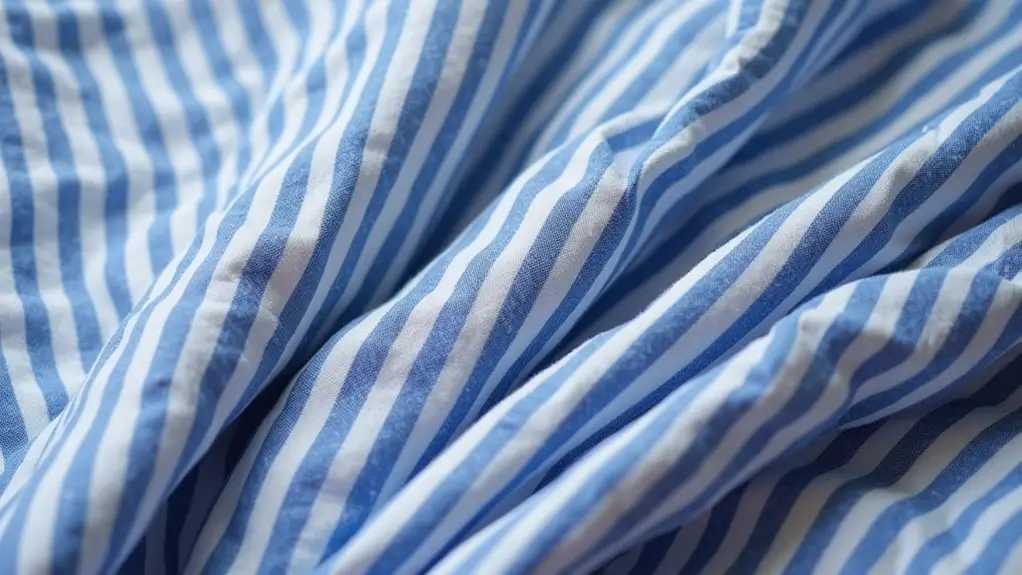
Seersucker fabric is made using a unique weaving technique. This technique creates its signature puckered texture.
Using slack-tension weaving, manufacturers alternate between tight and loose threads on specialized looms. This technique produces the distinctive crinkled appearance you'll recognize instantly.
Modern textile innovation has refined this process while maintaining seersucker's legendary cooling properties. Today's manufacturing methods combine traditional techniques with advanced technology. This guarantees the lightweight nature of seersucker clothing remains consistent.
Seersucker fabric has a centuries-old history. Modern production methods have made it more durable and versatile than ever.
From Workwear to Fashion Statement
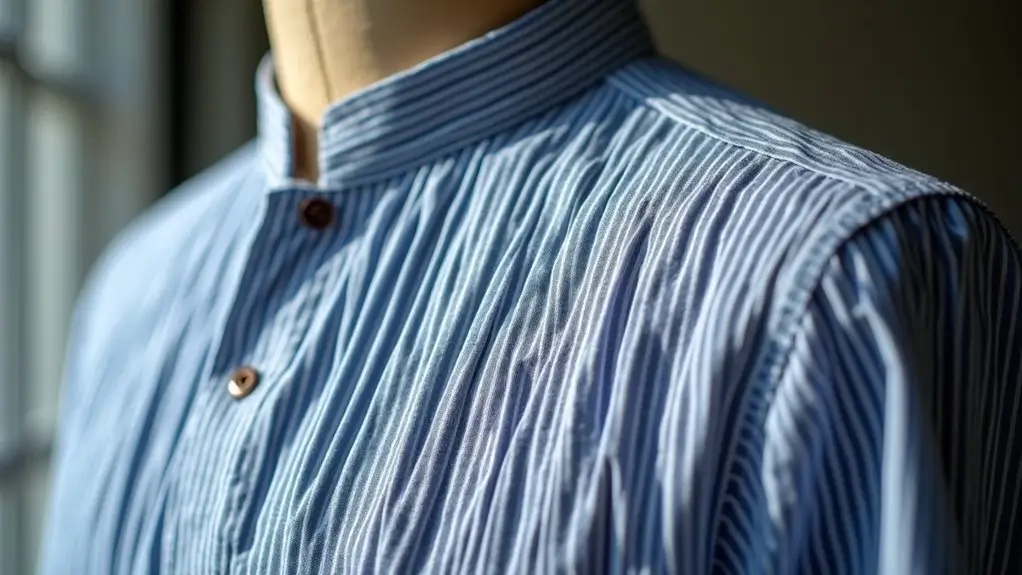
Seersucker was originally worn by laborers and railroad workers seeking relief from sweltering heat. Since then, it has undergone a remarkable transformation in the fashion world. This versatile cotton fabric now graces runways and high-end boutiques. Many choose to wear a seersucker suit or jacket for both comfort and style. The classic blue and white stripes of seersucker remain a timeless favorite.
Here's how seersucker has evolved into a fashion statement:
- From workwear to Wall Street, where professionals don seersucker suits for summer meetings.
- Through preppy culture, where seersucker jackets and blazers became a staple of Ivy League style.
- Into modern collections, where designers experiment with new colors and contemporary cuts.
Today's seersucker products blend traditional appeal with current trends. This makes it easier than ever to wear this historic fabric with confidence.
Modern Applications and Global Impact of Seersucker
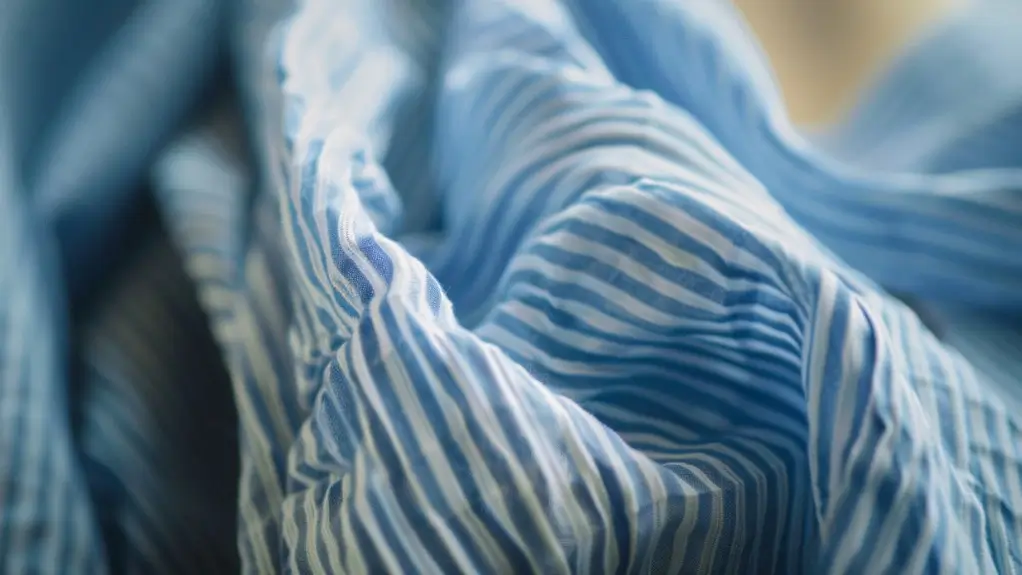
Modern seersucker has transcended its American roots to become a globally recognized fabric. It appears in fashion collections from Milan to Tokyo. Its distinctive white stripes and cooling properties are featured in both casual wear and high-end designer pieces. These elements are incorporated across a wide range of clothing styles.
The breathable nature of cotton seersucker makes it perfect for today's climate-conscious consumers. Contemporary preferences have inspired designers to try new colors and patterns. They continue to honor the fabric's cultural significance.
Seersucker's modern applications extend beyond traditional suits. The fabric now appears in sportswear, accessories, and even home décor. This proves its comfort in warm weather remains as relevant as ever.
Final Words
Seersucker evolved from a colonial cooling fabric to a contemporary fashion staple, showcasing its remarkable adaptability. The textile's signature puckered texture and breathable weave continue to influence modern designers. Designers have incorporated it into everything from seersucker suits to streetwear.
Whether you choose seersucker pants, jackets, or shirts, this fabric offers comfort and style that suits many occasions.
Learn more fabric knowledge on the Longan Craft Blog, and dive into the fabric world with Longan Craft!
FAQs
How Do You Properly Clean and Maintain Seersucker Without Damaging Its Texture?
You can machine wash seersucker in cold water and tumble dry on low. Don't iron the puckered texture—it's meant to be wrinkled. Dry cleaning is best for suits to maintain shape and structure.
Can Seersucker Be Worn Effectively in Humid Climates Versus Dry Heat?
Seersucker performs excellently in humid and dry climates. Its puckered texture keeps fabric off your skin. This allows air circulation and moisture wicking. It's particularly effective in humid conditions where breathability matters most.
What Accessories and Shoes Pair Best With Seersucker Outfits?
Pair your seersucker with light-colored leather shoes like tan brogues or white bucks. Add classic accessories like panama hats, silk knit ties, or cotton pocket squares in complementary pastels.
Seersucker blazers pair well with light-colored leather shoes. They also complement accessories like silk knit ties or cotton pocket squares.
Does Authentic Seersucker Shrink After Washing, and How Should Sizing Be Adjusted?
You'll want to size up slightly as authentic seersucker can shrink 1-2% after washing. It's best to dry clean, but if you machine wash, use cold water and hang dry to minimize shrinkage.
Are There Specific Body Types That Wear Seersucker More Flatteringly Than Others?
Seersucker flatters most body types, as its puckered texture camouflages imperfections. If you're slim, it adds dimension. If you're larger, its vertical stripes create a lengthening effect that's quite slimming.


0 comments